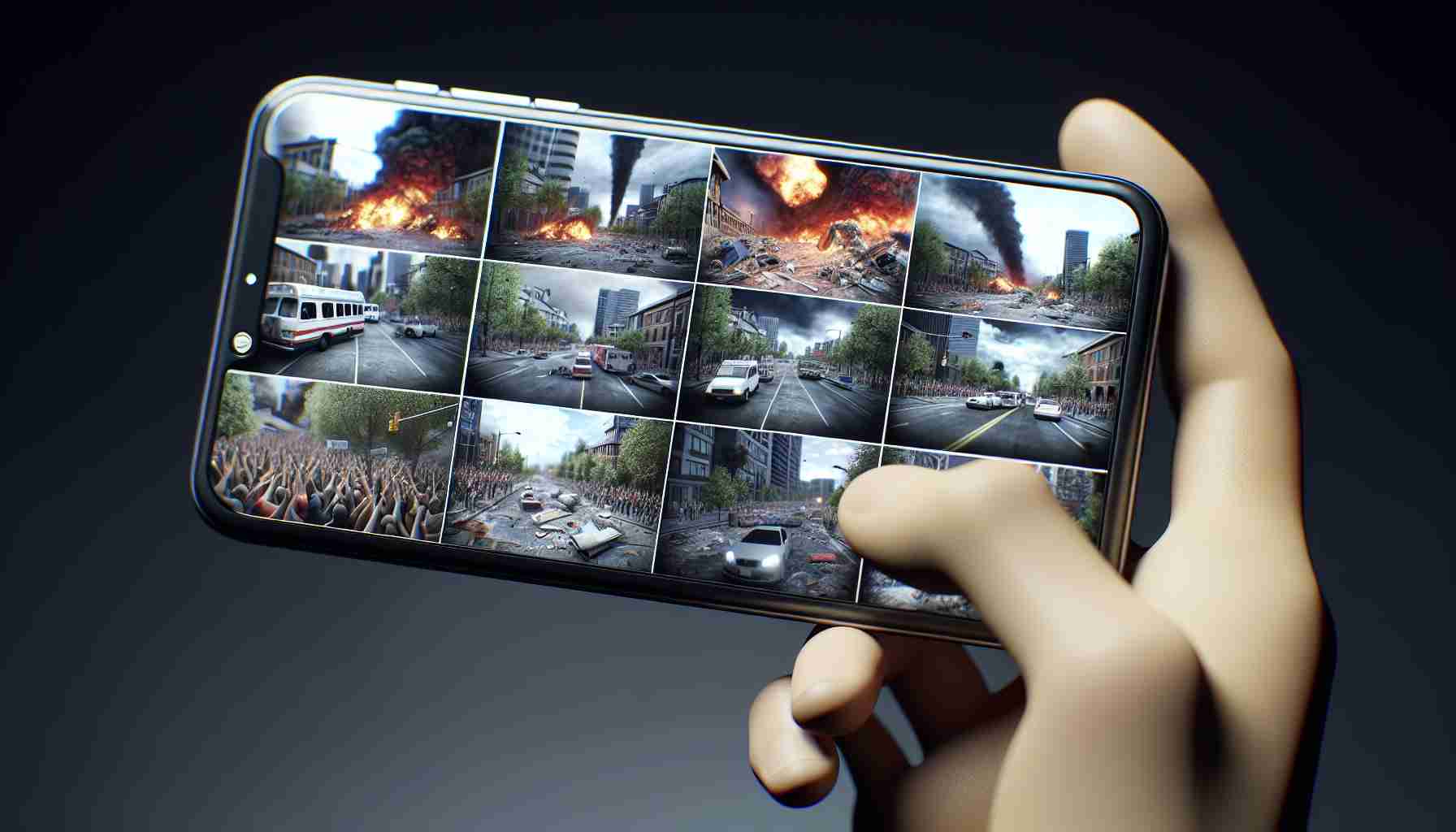Tragedy Strikes with Gunfire in a Charlotte Neighborhood
Tranquility was shattered in a Charlotte community when a dramatic encounter involving law enforcement and a gunman unfolded. Caught in this chaos was Saing Chhoeun, who unwittingly became a chronicler of these harrowing events with his smartphone. His footage bore witness to a devastating loss: four officers and the armed assailant lost their lives in violence that shook the nation.
The New Witnesses: Citizens as Documentarians in Emergencies
This era of ubiquitous technology has birthed a new phenomenon – bystanders are now the documentarians of crises, using their mobile devices to capture events as they occur. Saing Chhoeun and Rissa Reign, a local youth coordinator, captured real-time accounts of the crisis, providing live updates to their communities and contributing to a collaborative understanding of events. They exemplify a growing trend where citizens, through their recordings, become active participants in matters of public interest.
Considerations and Ethics in the Age of Instant Information
The evolution of bystanders into on-the-spot reporters sparks a multitude of questions: what are the implications for privacy, law enforcement response, and public perception? While there are undeniable advantages, such as providing real-time evidence and promoting accountability, this shift also raises concerns about privacy, potential hindrances to law enforcement, and the rapid spread of misinformation.
Confronting the Challenges Posed by Immediate Media
As society navigates these new waters, the narrative of events like the Charlotte shooting becomes multifaceted through the lenses of civilian smartphones. The role of modern bystanders is complex and fraught with challenges, both ethical and practical, but one thing is clear: these digital witnesses are shaping the way we understand and respond to emergencies.
Impact of Smartphone Footage on Law Enforcement and Justice
The presence of smartphone footage in crisis situations can have a significant impact on law enforcement and the judicial system. As a form of evidence, such footage may be crucial in investigations and court cases, offering unfiltered documentation of events. This can sometimes lead to expedited justice by providing clear proof of what transpired. However, the footage can also become a subject of controversy if it appears to contradict official reports, leading to public outcry and skepticism towards law enforcement narratives.
Key Questions in the Role of Witnesses with Smartphones
What are the legal implications of civilian-captured footage in criminal investigations and court proceedings?
Smartphone footage can be admissible as evidence in court if it’s relevant and authentic, contributing to the judicial process by offering an unedited account of events. However, its admissibility can be challenged based on concerns of privacy rights or if it is deemed prejudicial.
How does the surge of bystander footage affect the privacy of individuals captured in the videos?
While recordings from public spaces are generally legal, the privacy of individuals can be compromised, especially if they are filmed without consent in distressing or compromising situations. It raises questions about the ethical responsibility of bystanders to respect the privacy and dignity of those they record.
What are the psychological impacts on civilians who witness and record crisis situations?
Witnessing a traumatic event can lead to lasting psychological effects, and actively recording such an incident might amplify these effects. Witnesses might experience stress, guilt, or trauma especially if the footage they capture goes viral or leads to widespread attention.
Advantages and Disadvantages of Smartphone Footage in Crises
Advantages:
– Transparency: Provides a raw, unfiltered view of events, which can increase transparency and accountability, especially concerning public officials and law enforcement actions.
– Empowerment: Enables citizens to play an active role in documenting and sharing events, fostering a sense of empowerment and community engagement.
– Real-time dissemination: Allows for immediate broadcast of significant events, facilitating timely public awareness and sometimes aiding emergency response efforts.
Disadvantages:
– Privacy concerns: Recording individuals without consent can infringe upon their privacy, especially in private or sensitive situations.
– Accuracy and context: Footage can be taken out of context, leading to misunderstandings and misinformation about the events recorded.
– Impeding law enforcement: Streams and recordings can interfere with police operations by inadvertently giving away tactical positions or strategies to perpetrators.
Related Links:
For further information on the topic of smartphones in crisis situations, you might consider exploring the following websites:
– Amnesty International for insights into human rights and digital witnessing.
– The Electronic Frontier Foundation for discussions on privacy and surveillance issues.
– WITNESS for resources on using video for human rights documentation and advocacy.
The use of smartphone footage in crisis situations remains a complex issue with evolving ethical, legal, and social implications. It is a phenomenon that continues to influence law enforcement, judicial proceedings, privacy norms, and the media landscape.
The source of the article is from the blog meltyfan.es
